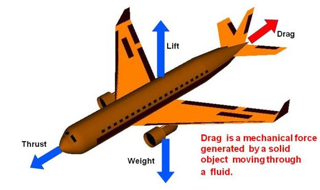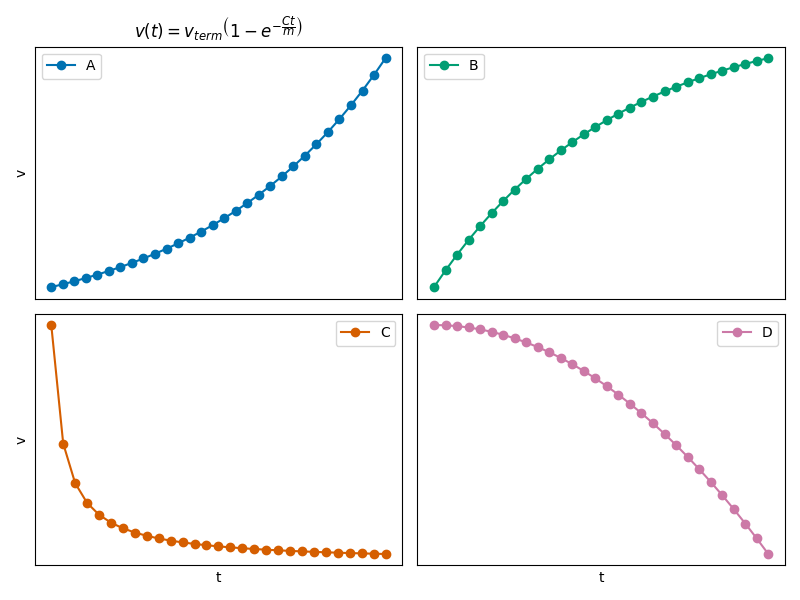Day 07 - Drag Forces#

Big Announcement#
MSU Tenure System Faculty Union Recognized#
What does that mean for you?#
Faculty can bargain with the university for what’s needed to meet our educational needs
For example, there’s more of y’all every year, but not more of us.

Announcements#
Homework 2 is due Friday; late after Sunday 11:59pm (always)
Homework 3 is now posted; due next Friday; late after Sunday…
Office hours, for now (Mihir-MN; Danny-DC):
Tuesday 6-8pm (MN, Zoom)
Thursday 6-8pm (MN, Zoom)
Friday 2-4pm (DC, 1248 BPS)
Zoom Link: https://msu.zoom.us/j/96882248075
password:
phy321msu
Friday’s Class: Will work Exercises 3a, 5a, & 5b form HW 3 together + questions
Seminars this week#
WEDNESDAY, September 10, 2025#
Astronomy Seminar, 1:30 pm, 1400 BPS, In Person and Zoom, Host~ Speaker: Rachael Roettenbacher, University of Michigan Title: Imaging Spotted Stars for an Improved Understanding of Stars and Exoplanets Zoom Link: https://msu.zoom.us/j/887295421?pwd=N1NFb0tVU29JL2FFSkk0cStpanR3UT09 Meeting ID: 887-295-421 Passcode: 002454
Seminars this week#
WEDNESDAY, September 10, 2025#
FRIB Nuclear Science Seminar, 3:30pm., FRIB 1300 Auditorium and online via Zoom Speaker: Suzanne Lapi of the University of Alabama at Birmingham Title: Development of new isotopes for theranostic applications Please see website for full abstract. Please click the link below to join the webinar: Join Zoom: https://msu.zoom.us/j/96485010083?pwd=O0rXwspn80aYGEI06QEZag6Ao4siq7.1 Meeting ID: 964 8501 0083 Passcode: 261744
Seminars this week#
THURSDAY, September 11, 2025#
Colloquium, 3:30 pm, 1415 BPS, in person and zoom. Host ~ Refreshments and social half-hour in BPS 1400 starting at 3 pm Speaker: Laura Chomiuk, MSU Title: Fall 2025 Physics and Astronomy Kickoff Background: For more information and to schedule time with the speaker, see the colloquium calendar at https://pa.msu.edu/news-events-seminars/colloquium-schedule.aspx Zoom Link: https://msu.zoom.us/j/94951062663 Password: 2002 Or complete link: https://msu.zoom.us/j/94951062663?pwd=c48uM25P9UsRVuR74rkOioOWgpoxgC.1
Seminars this week#
FRIDAY, September 12, 2025#
QuIC Seminar, 12:30pm, -1:30pm, 1300 BPS, In Person
Speaker: Jean Paul Sadia, MSU
Title: Introduction to Quantum Information and Computation
Full Scheule is at: https://sites.google.com/msu.edu/quic-seminar/
For more information, reach out to Ryan LaRose
Seminars this week#
FRIDAY, September 12, 2025#
IReNA Online Seminar, 2:00 pm, via Zoom. Hosted by: Artemis Tsantiri (University of Regina, Canada) Speaker: Lorenzo Roberti, INFN-LNS, Italy/Konkoly, Observatory Hungary Title: Carbon-Oxygen Shell Mergers in Massive Stars Zoom Link: https://msu.zoom.us/j/827950260 Password: JINA
AI Policy Proposals#
Proposal 1: We adopt a policy that does not allow AI use at all.
Proposal 2: We adopt a policy that allows AI use for brainstorming, help, and editing.
Proposal 3: We adopt a policy that allows AI for use in nearly any way.
Proposal 4: We adopt a policy that allows AI for use in any way with no documentation required.
Updated AI Policy#

Proposal 2#
We adopt a policy that allows AI use for brainstorming, help, and editing.
AI cannot be used for direct answers or completion of assignments.
We expect documentation of AI use, but it can be informal.
Violations are discussed with Danny; the first violation requires a redo of the assignment, and repeated violations result in a failing grade.
Received 75% of first choice votes
Goals for Week 3#
Be able to answer the following questions.
What is Mathematical Modeling?
What is the process for analyzing these models?
Be able to solve “Simple” Motion Problems with Newton’s Laws.
Our man, Reynolds#

The Reynolds number is a dimensionless quantity.
It is a ratio of inertial forces to viscous forces.
\(\rho\) - density of the fluid
\(v\) - velocity of the object
\(L\) - characteristic length
\(\mu\) is the dynamic viscosity
Our man, Reynolds#

BTW, this is not a photo of Reynolds.
This is Stokes.
He developed the concept of the Reynolds number.
Reynolds “popularized” it according to the Wikipedia.
Discussion: What kinds of systems have a high/low Reynolds number?
Clicker Question 6-2a#
I made a mistake explaining our linear drag model derivation.
Consider a ball falling down with a coordinate system such that \(y\) is positive downward (as before). Which of the following is correct for the differential equation:
\(m\ddot{y}=-mg+bv_y\)
\(m\ddot{y}=-mg-bv_y\)
\(m\ddot{y}=+mg+bv_y\)
\(m\ddot{y}=+mg-bv_y\)
Think about the SIGN of \(v_y\); it’s a component not a speed!
Clicker Question 6-2b#
Assuming a linear model for Air Resistance \(\sim bv\), we can obtain this EOM for the velocity a falling ball, after separation of variables:
Assume we try to integrate this equation from \(v_y = v_{y0}\) at \(t=0\) to \(v_y(t)\) at time \(t\).
Write the integral (on both sides) that is needed to solve this equation.
This integral setup is common in physics derivations with ODEs; provided we can find an anti-derivative.
Clicker Question 6-3#
For the system of Linear Drag in 1D, we found a solution for the velocity as a function of time, with \(v = 0\) at \(t = 0\). $\(v(t) = v_{term}\left(1-e^{-\dfrac{bt}{m}}\right)\)$
where \(v_{term} = \sqrt{\frac{mg}{b}}\).

CQ 6-3#
Which sketch could be correct for the velocity of the ball?
Clicker Question 6-4#
For the system of Quadratic Drag in 1D, we found a solution for the velocity as a function of time, with \(v = 0\) at \(t = 0\).
where \(v_{term} = (mg/c)^{1/2}\). Do the units make sense? What are the units \(\left[gt/v_{term}\right]\)?
Yes,\(v\) and \((mg/c)^{1/2}\) have the same units; the units for \(\left[gt/v_{term}\right]\) are m/s.
No, \(v\) and \((mg/c)^{1/2}\) have different units; the units for \(\left[gt/v_{term}\right]\) are m/s.
Yes, \(v\) and \((mg/c)^{1/2}\) have the same units; the units for \(\left[gt/v_{term}\right]\) are unit-less.
No, \(v\) and \((mg/c)^{1/2}\) have different units; the units for \(\left[gt/v_{term}\right]\) are unit-less.
Clicker Question 6-5#
For the system of Quadratic Drag in 1D, we found a solution for the velocity as a function of time, with \(v = 0\) at \(t = 0\).
where \(v_{term} = \sqrt{mg/c}\). What happens when \(t \rightarrow \infty\)?
The object stops moving.
The object travels at a constant velocity.
The object travels at an increasing velocity.
The object travels at a decreasing velocity.
I’m not sure.
